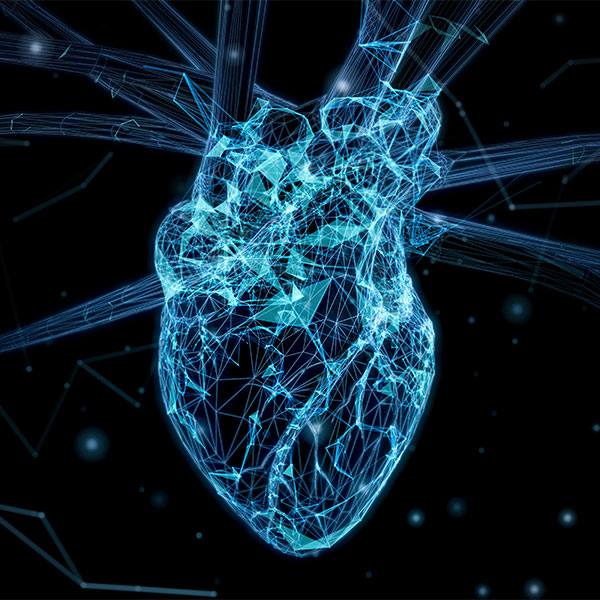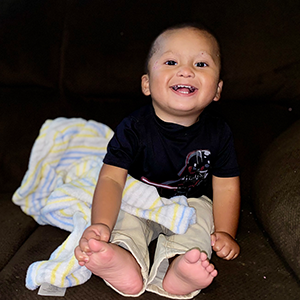-
Discovery’s Edge: Discovery’s present
Thanks to the generosity of patients participating in research, benefactor funding, and the dedication of Mayo researchers, people managing primary sclerosing cholangitis in the present can look forward to a brighter future.
It’s both a mouthful and a ruthless condition: primary sclerosing cholangitis.
An abnormal liver test is the first sign of trouble for about half of patients. The other half already deal with fatigue, jaundice, itching and abdominal pain from the liver damage. And, for the majority of PSC patients, this is not the only chronic disease they manage. Between 70 and 80 percent of PSC patients also have inflammatory bowel disease, most commonly ulcerative colitis.
PSC is a chronic disease affecting about one in 10,000 people, and having it raises the risk of colon, bile duct, and gallbladder cancers. Based on data collected by the United Network for Organ Sharing, six percent of all liver transplants in the United States are due to PSC despite that condition’s overall rarity.
But even a transplant doesn’t always wipe out the disease.
“Depending on what data you look at, about 20 percent of patients with this disease who get successful transplants get the disease after liver transplant,” says Nicholas F. LaRusso, M.D., the Charles H. Weinman Professor, gastroenterologist and cell biologist at Mayo Clinic. “It recurs. That’s telling us something but we haven’t figured out quite what it is.”
With such an outsized clinical shadow, PSC is a medical condition in urgent need of some sunshine.
Mayo Clinic Researchers Wrote the Book on PSC
Now after more than 40 years of work, Mayo Clinic researchers are at a key juncture in their effort to take this disease apart and see what makes it tick. Thanks in large part to an infusion of benefactor funding, a five-year PSC research project is getting underway with three prominent researchers at the helm.
The goal? Find a breakthrough treatment for patients.
“We are the major referral center in the country, if not the world for patients with PSC,” says Dr. LaRusso. In 1980, Dr. LaRusso and his collaborator Russell H. Wiesner, M.D., published a compilation of 50 patient cases. That paper, in the journal Gastroenterology, described the features of PSC for the first time. It also implicated specific cells, called cholangiocytes, in disease development.
Cholangiocytes
After a meal, bile is needed for digestion. Bile moves from the liver to both the gallbladder and the intestine through the biliary tree, a network of channels within and just outside the liver. Depending on the meal and other factors such as hormones, the composition and amount of bile can vary. To help regulate it, the biliary channels are lined with cells called cholangiocytes.
Cholangiocytes help fine-tune the recipe for bile. They also act as sentinels for things like drugs or microorganisms that can harm the liver. These tasks require the cell’s membranes to allow substances to flow back and forth between the cholangiocyte and the biliary channel. Cholangiocytes also have an antenna-like structure, called a primary cilium that extends from each cell into the biliary tube. This cilium can act as a sensor to detect changes in bile flow and composition.
Slow But Steady
Perhaps in response to something in the diet, a pathogen or bacteria from the gut, or a genetic predisposition, cholangiocytes begin to marshal immune cells. Divorced from the normal regulatory process, cholangiocytes may become so dysfunctional that they shut down.
But in some cases they may not die. As they slumber, prevented by cellular quality control from dividing, they still drive inflammation. And as immune cells do their work, scarring pinches and narrows the bile channels of the biliary tree. Eventually these channels look like a string of beads, and the scar tissue begins spreading to the liver tissue, causing losses in liver function.
In a previous collaboration, Dr. LaRusso and Mayo Clinic colleagues determined that genetic changes expressed in the cilia were linked to another condition, polycystic kidney disease.
By combining skills, the team identified an animal model of the disease, a molecular target for treatment, and tested different compounds. They began a clinical trial and were able to provide a new therapeutic option for patients with cystic liver and kidney disease.
That process is now a template for the current PSC initiative funded in large part by the Thalia and Michael C. Carlos Foundation. The initiative unifies separate research projects already in progress or planned including integrating cell and animal research, genomic research, and clinical research on PSC by Dr. LaRusso, Kostantinos N. Lazaridis, M.D., and Gregory J. Gores, M.D.
A Formidable Team
This trio of distinguished investigators and their labs have a specialized approach to PSC research, that when unified, synergizes their work.

Dr. Lazaridis is a hepatologist, Everett J. and Jane M. Hauck Associate Director, Center for Individualized Medicine in Rochester, with extensive training in genomics of human disease. Dr. Gores is a hepatologist and Mayo’s Reuben R. Eisenberg Professor and Mr. and Mrs. Ronald F. Kinney Executive Dean for Research Honoring Ronald F. Kinney, Jr. Dr. LaRusso is an expert in the clinical, biochemical, imaging, and disease features of PSC.
Combined, the skill sets of Drs. Lazaridis, Gores and LaRusso will move PSC research from discovery science in the lab through clinical trials and hopefully to a treatment for PSC patients.
To do that, the team has an ambitious list of experiments to undertake.
The Big Question, Made Possible by Patient Generosity
When a disease has no clear cause scientists ask, is there a substance, habit, or activity common to all disease sufferers but rare in the general population? The PSC team hypothesized the cause was likely both environmental and genetic.
Dr. Lazaridis started with environmental exposures. There were traces of differences. Compared to healthy controls, people with PSC consumed less coffee and fish, reported more urinary tract infections (women), and had more exposure to farm animals. But no striking differences appeared in the data, so he turned to the genetic code of PSC patients. Having trained at the National Human Genome Research Institute with Francis Collins, M.D., Ph.D., in the early part of the decade, Dr. Lazaridis is no stranger to sifting through the human genome. But to sift you need samples, and gathering them is no easy task with a disease this rare.
“For a disease that affects one person in 10,000 you have to screen more than 10 million people to identify the number of cases we have in our registry,” says Dr. Lazaridis. “This collection of PSC patients represents about 5 percent of all patients in the U.S.”
Over the last 10 years, Dr. Lazaridis has collected samples from about 1,300 patients. It is considered the largest and most comprehensive PSC registry anywhere.
“I still remember my emotions after collecting the first 100 cases,” says Dr. Lazaridis. “As I was walking to my own lab I thought, I hold in my hands a box with invaluable individual specimens from PSC patients who come from all over, entrusting to us their genetic blueprint. I was humbled and committed to solving this mystery.”
 Currently Mayo Clinic has more than 50,000 tubes of specimens from these patients in freezers, along with about half a million clinical variables and outcomes collected into a single database.
Currently Mayo Clinic has more than 50,000 tubes of specimens from these patients in freezers, along with about half a million clinical variables and outcomes collected into a single database.
“We are expecting to have the exome sequences of nearly 20,000 genes from each one of these patients of our registry completed in early 2017,” says Dr. Lazaridis. “So, we have many pieces of a really big puzzle. Each patient and data point has something to tell us about the big picture of this disease.”
To date, based on Mayo Clinic research, there are 20 known genetic variations associated with development of PSC, four of which debut in a recent Nature Genetics letter.
According to Dr. Lazaridis, a senior author on the new publication, this new work outlines the results from the largest genome-wide association study of PSC to date. In addition to the newly identified genetic variations that predispose for PSC, the authors also demonstrate the clinical link between PSC and ulcerative colitis is more than genetic.
A Better Model
As the genetic and environmental investigation moves forward, Dr. Gores is examining molecular pathways associated with disease development and a model of biliary inflammation.
“We’ve been using small molecules,” says Dr. Gores, in modelling efforts to date. “We hope to have a genetic model that’s more like the human disease, and a mouse model.”
In these models, Dr. Gores will direct investigation of PSC, and diseases related to PSC, in cells and animal models. He is also developing lines of inquiry into the processes and systems associated with the disease process. For example, he says, “apoptosis, a specific type of cell death, of the cells that line the bile ducts contributes to PSC. But how do the bile ducts become inflamed? Is it because cell death is occurring? Or is it because the cholangiocytes are misbehaving and recruiting inflammatory cells?”
Do Cells Implicated in Aging Play a Role?
Another question under investigation by Dr. LaRusso takes on PSC from a new angle. From his work in the Mayo Clinic’s Robert and Arlene Kogod Center on Aging, Dr. LaRusso wondered if a certain type of dormant cells, called senescent cells, might be important in PSC.
Senescent cells stop multiplying and lapse into a state of a state of suspended animation, or arrest.This lapse is generally thought to protect the cell from becoming cancerous. But although they are not growing, senescent cells communicate to the tissue around them. In this limited environment they can drive chronic inflammation and tissue dysfunction by churning out molecules that affect the surrounding tissue, a cellular condition called “senescence associated secretory phenotype” or SASP.
“What are these molecules? What cells do they attract?” asks Dr. LaRusso. “Are they soluble or contained in extracellular vesicles? That’s the discovery component.”
Finding the Pattern
The research gathered by the team in the discovery phase will provide new ideas for clinical trials on drugs, diagnostics, and other possible PSC treatments. In the case of disease progression, the data is already working for patients.
“We know that PSC is like a snowflake,” says Dr. Lazaridis. “Everybody is the same but at the same time different.”
Right now, there’s no good way to predict how the disease will progress in any given patient. So using the records from the thousands of patients who come to Mayo for PSC treatment, the team molded about 300,000 data points into a model of biochemical features and outcomes.
This new PSC model is still being tested for accuracy with other groups, but if it is confirmed it would provide an important step forward for these patients — demystifying the probable twists and turns they’ll face managing PSC in the future. It could also serve as a way to improve PSC clinical trials. Using the validated model, PSC disease progression before and after therapy could be better assessed and stratified.
The Ultimate Deliverable
With data from old and new research, and with funding that allows for high risk experimentation, the PSC team has a few good leads PSC treatment, including: diagnostic tools, natural compounds like curcumin, probiotic bacteria to shift the intestinal microbiome, stem cell therapies, and certainly drug therapy.
So there is hope on the horizon for patients with PSC and a chance that many of their questions will be answered in the near future. While the research undertaken by the Carlos Foundation PSC Program spans the research spectrum from cell work to clinical trials, Dr. LaRusso’s team’s goal is never far from his mind.
“The ultimate deliverable here,” says Dr. LaRusso, “is an effective treatment.”
-- Sara Tiner, December 2016








